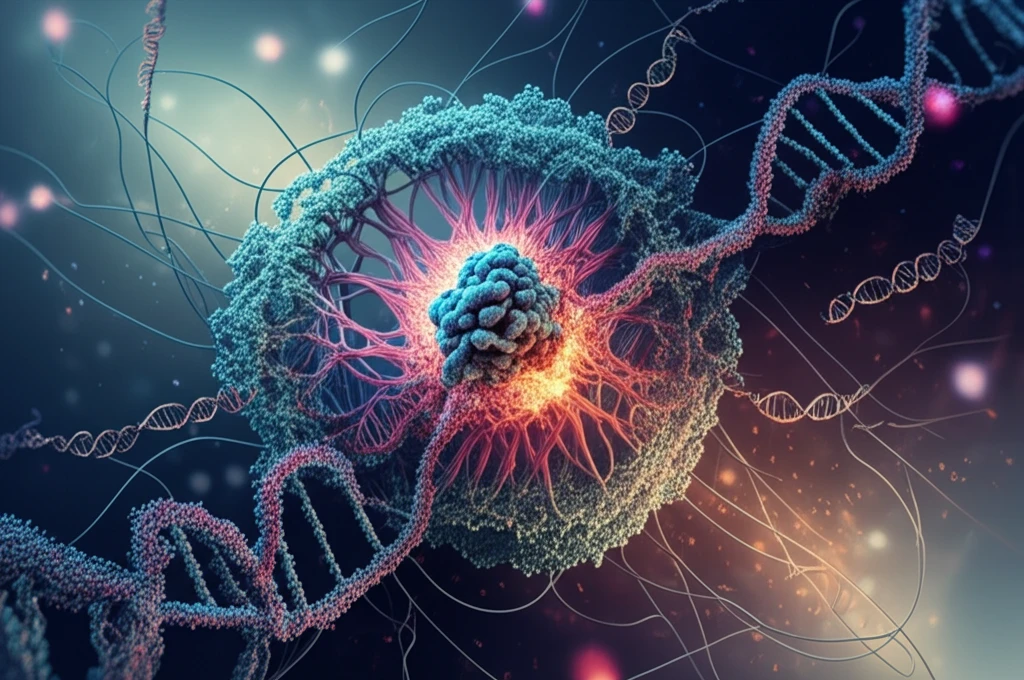
Unlocking the Mystery: How Early Growth Response Protein 1 (Egr1) Affects Diabetic Kidney Disease
"New Research Reveals a Key Mechanism in Extracellular Matrix Production"
Diabetic kidney disease (DKD) has become a leading cause of end-stage renal disease (ESRD) worldwide, surpassing even chronic glomerulonephritis. This alarming trend underscores the urgent need for effective treatments and a deeper understanding of the mechanisms driving DKD progression. Recent research has illuminated the critical role of early growth response protein 1 (Egr1) in the development of DKD. Egr1, a transcription factor, has been shown to play a significant role in enhancing mesangial cell proliferation and the production of extracellular matrix (ECM), both key factors in DKD.
The extracellular matrix is a network of proteins and other molecules that provide structural support to cells and tissues. In DKD, excessive accumulation of ECM proteins, such as collagen and fibronectin, leads to glomerular mesangial expansion, hypertrophy, and ultimately, renal failure. Researchers have been working to identify the specific pathways through which Egr1 contributes to this harmful process.
Long noncoding RNAs (lncRNAs) are molecules that, while not coding for proteins, play essential roles in gene regulation and various biological processes. One such lncRNA, Arid2-IR, has been identified as a key player in kidney disease. A new study now reveals how Egr1 upregulates Arid2-IR, promoting ECM production and contributing to the progression of DKD. This article explores these findings, offering insights into potential new therapeutic targets for combating diabetic kidney disease.
Egr1 and Arid2-IR: Key Players in Diabetic Kidney Disease

The study reveals a novel mechanism by which Egr1, a transcription factor known to contribute to DKD, mediates ECM production. Researchers discovered that Egr1 upregulates the long noncoding RNA Arid2-IR, which in turn promotes ECM production in the context of diabetic kidney disease. This connection between Egr1 and Arid2-IR provides a more detailed understanding of the molecular processes driving DKD.
- In vivo studies: Demonstrated increased Arid2-IR in diabetic mouse kidneys.
- In vitro studies: Showed similar Arid2-IR upregulation in mesangial cells exposed to high glucose.
- Knockdown experiments: Reduced Collal and α-SMA expression in mesangial cells.
- Overexpression experiments: Increased Arid2-IR and ECM components.
A Promising New Target
This research highlights Arid2-IR as a potential therapeutic target for diabetic kidney disease. By understanding how Egr1 upregulates Arid2-IR to drive ECM production, scientists can develop targeted therapies to disrupt this pathway, potentially preventing or slowing the progression of DKD. Further studies are needed to fully elucidate the mechanisms by which Egr1 regulates Arid2-IR and to explore the potential of Arid2-IR-targeted therapies in clinical settings. However, this study provides a crucial step forward in the fight against diabetic kidney disease.
